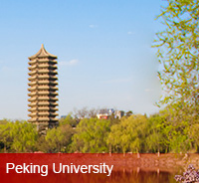Pollution Haven Hypothesis
Mar 18-2019

Statistics showed that after joining the WTO, China had emitted significantly more CO2 than usual, while the US and Germany had discharged less, revealed NSD Deputy Dean and Professor Xu Jintao in a recent lecture titled Key Environmental Issues in China’s Growth Model Transformation. Using Synthetic Control Method, his research corroborated the Pollution Haven Hypothesis which posited that open trade would facilitate polluting industries to move from developed countries to under-developed countries due to the latter’s lower environmental factor cost. After China’s accession to the WTO, capital-intensive industries, which had no comparative advantages, had racked up much more exports than labor-intensive ones. This riddle could be explained by the fact that capital-intensive industries tended to be highly polluting and such an environmental input (using CO2 as proxy) was amplified by the WTO membership and contributed significantly to export growth. But not all was downbeat. Prof. Xu found that contrary to the views of economists like Paul Krugman, half of China’s annual growth of 9% could be attributed to all-factor productivity, proving China’s technological advancement.







